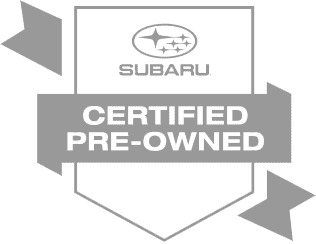If you’ve spent much time reading or talking about cars, you’ve probably heard terms like Front-Wheel Drive, Four-Wheel Drive, and All-Wheel Drive being thrown around. You might have even seen Four-Wheel Drive (4WD or 4x4) and All-Wheel Drive (AWD) being used interchangeably. They sound pretty similar, but the two systems are actually very different from each other. All-Wheel Drive is a much newer technology, and it comes standard with most Subaru vehicles. The team here at Adventure Subaru in Fayetteville, Arkansas, wants you to know all about AWD and why it’s important, so we broke it down for you below.
Chances are, you probably already have a general idea of what Four-Wheel Drive is. It’s usually found on trucks like the Chevy Silverado and truck-based SUVs like the Toyota 4Runner. It’s primarily used for off-roading, but it can be helpful in different weather conditions as well. One of the biggest differences between 4WD and AWD is that 4WD does not stay on all the time. In order to activate 4WD mode, you have to push a button, pull a lever, or—if you can believe it—get out of the vehicle and manually unlock the hubs in the older models. The system has its benefits if you’re a big off-roader, but it’s heavier and more complicated than AWD, and it doesn’t work very well at highway speeds.
All-Wheel Drive, on the other hand, is a newer computerized technology that is designed to read the conditions on the road and respond appropriately. When you’re driving your Outback on the highway, for example, the system will send most of your engine’s power to the Outback’s rear wheels in order to achieve maximum fuel efficiency. That’s important, because 4WD systems can significantly affect the fuel efficiency of a vehicle. If traction starts to degrade in your Outback, the AWD system will automatically adapt in order to distribute power more evenly to all the wheels. So basically, your Outback’s traction will immediately improve and you don’t even have to do anything. Yeah, it’s pretty neat!
Now that you understand the basic difference between 4WD and AWD, we should probably also tell you that not all AWD systems are created equal. Subaru went above and beyond in this area—no surprise there! Subaru’s symmetrical AWD system, like the one in the Forester, always directs at least 20-percent of the engine’s power to the rear, and it can direct larger amounts if needed. So while other cars focus all the power up front until you start slipping, you can feel confident that your Forester won’t have to start slipping around before your safety net kicks in. Subaru’s system will do a much better job at preventing your Forester from slipping in the first place!
Subaru makes AWD systems a priority because it’s not just about performance, it’s about your safety. AWD systems are especially helpful in rapidly changing conditions or when driving your Crosstrek on a road with intermittent snow and ice. If you’ve ever driven a car that tended to slip on icy or wet roads, All-Wheel Drive is an absolute game-changer.
All-Wheel Drive comes standard in the Crosstrek, Forester, Outback, Impreza, Legacy and WRX. Adventure Subaru in Fayetteville, AR is the perfect place to take one for a test drive and experience a whole new kind of connection with the road.
Click here to browse our inventory of AWD Subaru models
Click here for directions to Adventure Subaru in NWA





